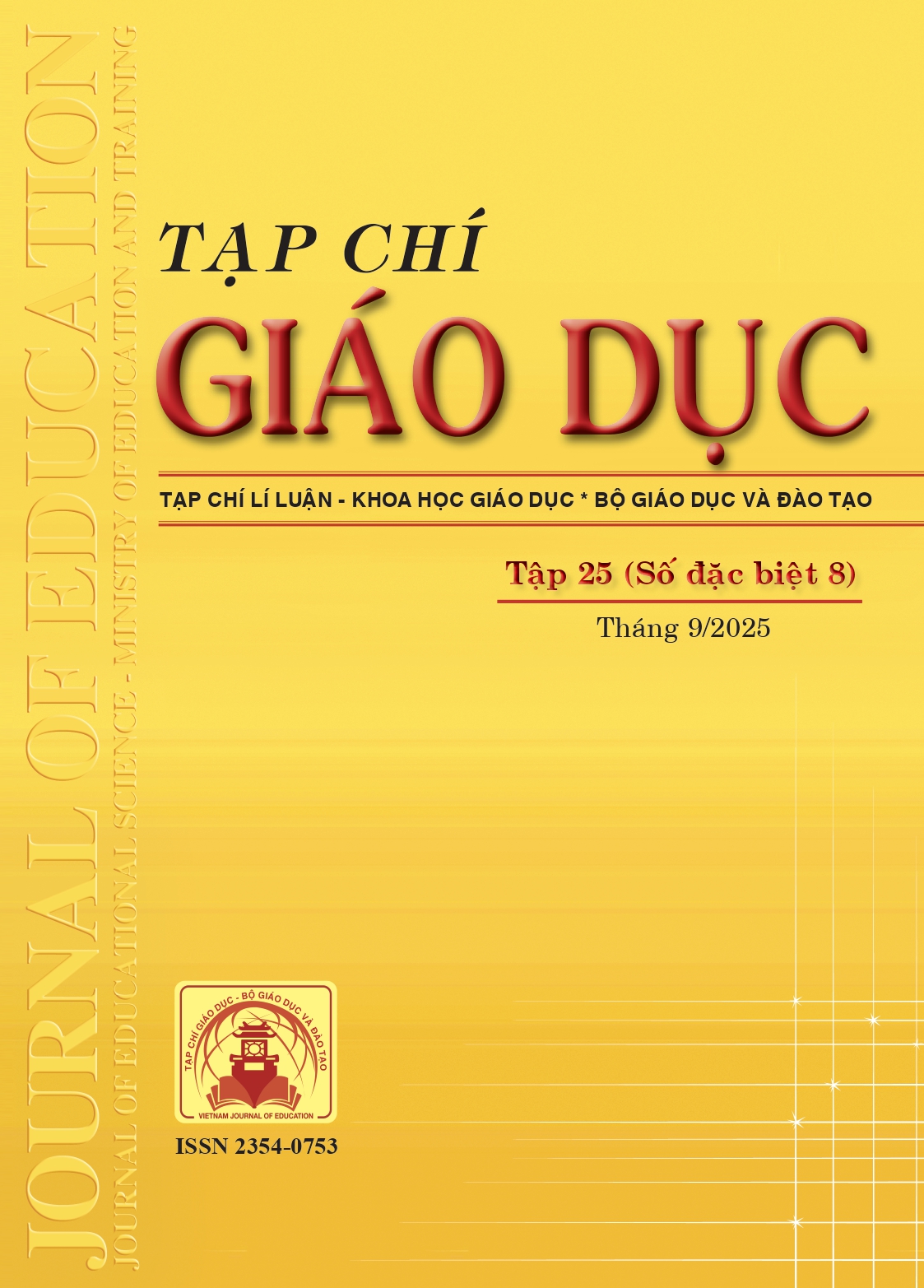Mô hình giáo dục thể chất phân hóa theo năng lực cho trẻ mầm non
Tóm tắt
In early childhood education, physical activities not only promote physical development but also contributes to the formation of positive emotions, social competence, and self-awareness. However, differences in children's motor abilities, readiness levels, and motivation often pose challenges in traditional physical education settings. To address this issue, this study proposes a differentiated physical education model tailored to the developmental characteristics and individual needs of preschool children. Its core objective is to foster self-belief and develop movement confidence. Key components of the model include tiered task design, flexible grouping, individualized support, and reflective self-assessment. This approach aligns with contemporary trends in early childhood education, particularly in the context of curriculum innovation in Vietnam. Additionally, the model supports teachers in developing effective differentiated teaching competencies and offers a promising pathway for personalizing physical education in preschool settings.
Tài liệu tham khảo
Bandura, A. (1977). Self-efficacy: Toward a unifying theory of behavioral change. Psychological Review, 84(2), 191-215.
Bộ GD-ĐT (2024). Báo cáo đánh giá kết quả 10 năm triển khai thực hiện Chương trình Giáo dục Mầm non. https://moet.gov.vn/content/vanban/Lists/VBDT/Attachments/1642/4bao-cao-thuc-hien-ctgdmn.pdf?utm_source
Gallahue, D. L., & Ozmun, J. C. (2006). Understanding motor development: Infants, children, adolescents, adults (6th ed.). McGraw-Hill.
Nguyễn Thị Thiên Nhiên (2025). Giáo dục thể chất phân hóa theo năng lực - Con đường phát triển sự tự tin vận động của trẻ mầm non. Tạp chí Giáo dục và Xã hội, 171, 86-89.
Nguyễn Ánh Tuyết (2023). Tâm lí học trẻ em lứa tuổi mầm non từ lọt lòng đến 6 tuổi. NXB Đại học Sư phạm.
Piaget, J. (1952). The origins of intelligence in children (M. Cook, Trans.). International Universities Press. (Original work published 1936).
Tomlinson, C. A. (2001). How to differentiate instruction in mixed-ability classrooms (2nd ed.). ASCD.
Vygotsky, L. S. (1978). Mind in society: The development of higher psychological processes (Vol. 86). Harvard University Press.
Wang, L., & Ha, A. S. (2013). Three-tiered teaching strategies in physical education: An application of the pedagogical model of differentiated instruction. Asia-Pacific Journal of Health, Sport and Physical Education, 4(1), 3-19.
Đã Xuất bản
Cách trích dẫn
Số
Chuyên mục
Giấy phép

Tác phẩm này được cấp phép theo Ghi nhận tác giả của Creative Commons Giấy phép quốc tế 4.0 .












